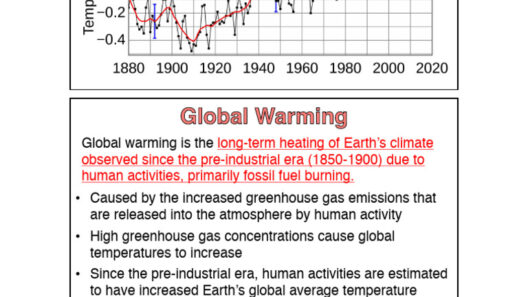Electric vehicles (EVs) have rapidly gained traction as a key component in the global strategy to combat climate change. They are often lauded for their potential to reduce greenhouse gas emissions and promote a transition towards sustainable transportation. However, a critical examination of the entire lifecycle of EVs reveals a more nuanced narrative. While they offer significant advantages, they also entail a series of challenges that must be addressed to ascertain whether they can genuinely save the planet or simply shift the problem elsewhere.
To begin with, it’s essential to understand the core benefits associated with EVs. Unlike traditional internal combustion engine vehicles, which emit carbon dioxide (CO2), nitrogen oxides (NOx), and particulate matter, EVs produce zero tailpipe emissions. This significant reduction in local air pollutants is particularly beneficial in urban areas, where smog and poor air quality can lead to severe health issues for residents. Moreover, as the energy grid becomes increasingly reliant on renewable resources, the emissions associated with the electricity used to power EVs can be drastically lowered. The potential for a cleaner grid indicates that the lifecycle emissions of EVs can be considerably less than those of gasoline-powered vehicles.
Nevertheless, the production and disposal of EVs present formidable challenges that complicate the seemingly straightforward narrative of environmental benefit. The battery components, especially lithium, cobalt, and nickel—key ingredients in lithium-ion batteries—pose ecological concerns. These materials necessitate extensive mining operations, which can lead to habitat destruction, significant water usage, and pollution of local waterways. Additionally, some mining practices can inflict social challenges, including labor abuses and violations of indigenous rights.
Moreover, the geographical concentration of these resources exacerbates the import dependencies some countries may face, generating geopolitical complexities. For instance, cobalt is predominantly mined in the Democratic Republic of Congo, leading to concerns about ethical sourcing and supply chain transparency. As the demand for EVs surges, the pressure to extract these minerals increases, potentially igniting further ecological degradation and social unrest.
Another critical facet to consider is the longevity and end-of-life implications of EV batteries. While the lifespan of these batteries has improved, with many lasting over a decade, their eventual disposal remains a significant issue. The environmental ramifications of improper disposal include soil and water contamination from hazardous substances. Recycling technologies are being developed; however, widespread implementation remains limited, with most batteries ending up in landfills. Efforts to create a circular economy for battery materials are underway, yet that has not fully materialized into standard practice.
Examining the potential of EVs must also encompass the infrastructure and energy sources utilized for charging. In regions heavily reliant on fossil fuels for electricity generation, the environmental benefits of transitioning to EVs can be dwarfed by the carbon emissions produced during energy production. In countries where coal is a primary energy source, the net reductions in CO2 emissions may be minimal. Transitioning to cleaner energy sources, therefore, is imperative to maximize the advantages of EVs. Upgrading the grid to accommodate increased electric loads while ensuring a higher proportion of renewables becomes essential in steering clear of merely shifting emissions from tailpipes to power plants.
Additionally, the consideration of overall transportation systems cannot be overstated. While personal ownership of EVs is promoted as a panacea for greenhouse gas emissions, it may unintentionally perpetuate a car-centric culture. Urban sprawl, traffic congestion, and dependence on personal vehicles contribute significantly to environmental degradation. Promoting public transportation, cycling, and pedestrian-friendly city designs can enhance sustainability efforts. Herein lies the paradox: while EVs can replace one set of problems, they might also maintain or exacerbate another if not integrated into a broader vision of sustainable urban planning and transportation policies.
Furthermore, consumer behavior plays a pivotal role in the effectiveness of EVs as a solution to climate change. The adoption rate of EVs is influenced by several factors, including cost, availability, and social perceptions. The perception that EVs are a luxury item can hinder widespread acceptance. Addressing the barriers to entry for lower-income populations will be essential in ensuring equitable access to cleaner transportation options. Programs for rebates and incentives may stimulate market demand but should be complemented with initiatives that prioritize affordability and accessibility for all demographics.
International cooperation emerges as a vital strategy to tackle the multifaceted challenges posed by EV adoption. To achieve sustainable mining practices, cross-border agreements could enforce responsible sourcing of materials. Governments must collaborate to establish and enforce environmental regulations that mitigate the adverse effects of mining and foster recycling technologies. The sharing of knowledge and resources on energy generation also plays a crucial role in optimizing the environmental benefits of EVs on a global scale.
In conclusion, while electric vehicles certainly present an opportunity to reduce greenhouse gas emissions and enhance urban air quality, they are not a panacea for environmental challenges. A holistic approach is necessary—one that encompasses battery production, ethical sourcing, energy generation, urban planning, and social equity. To ascertain whether EVs can genuinely save the planet or merely shift the problem, a critical evaluation of all facets of the electric vehicle lifecycle is essential. Only through comprehensive strategies and concerted actions can society hope to address the intricate dynamics of climate change and secure a more sustainable future.








